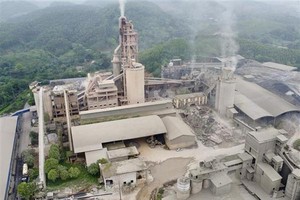
The case of urban flooding at different levels in Hanoi right now is the result of asynchronous planning without a clear long-term vision. Infrastructure building projects for more accommodation, streets, parks, traffic facilities, green space, and sewers are not constructed in harmony with one another. Even worse, some projects block the drainage of previously built structures; hence, new residential areas of Nam An Khanh (in Hoai Duc District), Yen Nghia (in Ha Dong District), My Dinh (in Nam Tu Liem District) frequently face urban flooding.
The subsidence of low-quality and patchy roads is also the reason for this flooding problem since rainwater cannot freely flow to rivers or canals.
Prof. Dr. Dao Xuan Hoc, former Deputy Minister of Agriculture and Rural Development in charge of irrigation, shared that developed nations rarely face urban flooding as they always synchronize their urban planning with wastewater drainage systems, along with large-scale underground sewer systems below the traffic ones, allowing people to move comfortably for repair tasks.
In contrast, there are certain areas in Hanoi like Nam Dong of Dong Da District, where the surface ground is lower than storm drains to To Lich River, and thus cannot perform the task well. Sadly, many newly formed urban areas in Hanoi outskirt are following that footstep.
Minister of Natural Resources and Environment Tran Hong Ha admitted in an interview on May 30 that the infrastructure planning of cities in Vietnam needs careful review. Despite having different topographic features, the design of wastewater drainage systems for all of them must be synchronous, taking into consideration the population density and infrastructure capacity.
This means long-term comprehensive planning in a period of 50-70 years or even a century. Please planning documents must be then strictly observed in all construction projects; otherwise, the situation cannot be amended. The design of a smart city must consider a system of reservoir and drainage to eliminate urban flooding for sustainable development.
























